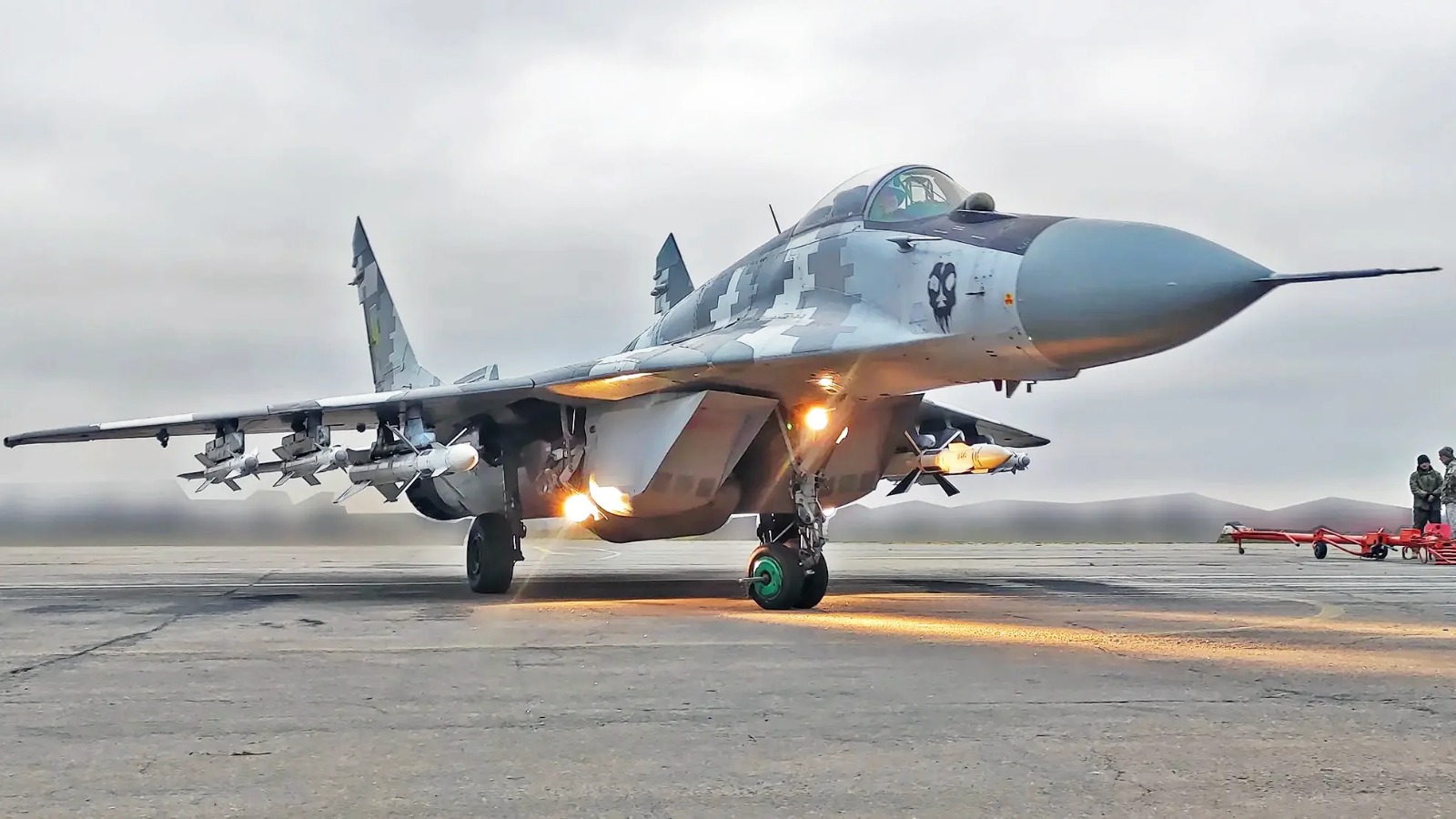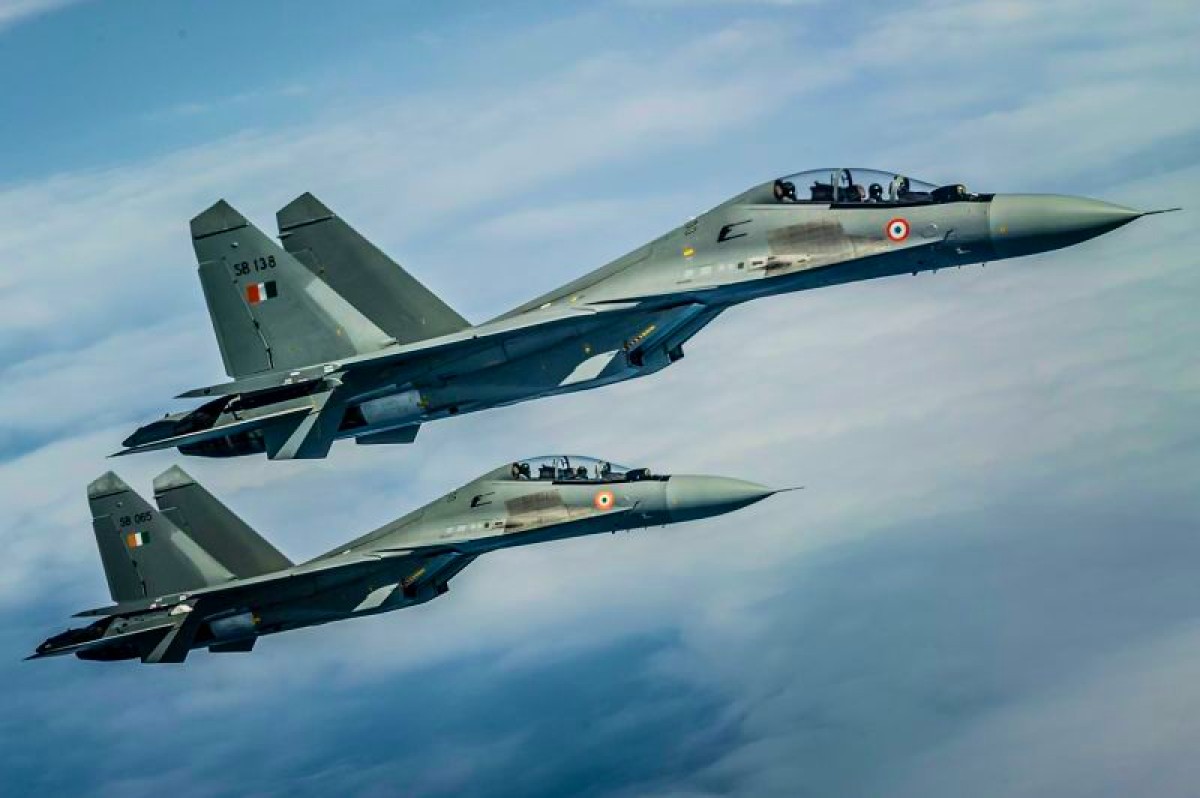The twin-engine single-seater fighter jet of 1980s vintage MiG-29 gained fame in 2022 as it became a symbol of Ukrainian resistance, and even Russia dithered using Sukhoi Su-30s against it. However, in the Indian sub-continent, Sukhoi Su-30 MKIs have outflanked MiG-29s as the Indian Air Force has ordered 12 more ‘Flankers’ instead of ‘Fulcrums.’
This came as a surprise to many as during the post-Balakot offensive by the Pakistan Air Force (PAF) in 2019, Su-30 MKIs with their outdated R-77 were forced to go on the defensive in the face of the American Advanced Medium-Range Air-to-Air Missile (AMRAAM) wielded by Pakistan’s F-16s.
Su-30MKI’s radars failed to pick up the PAF fighters and had to undertake high-speed evasive maneuvers during the dogfight. The second Sukhoi took tactical action after being told by the Barnala-based (Punjab) Integrated Air Command and Control System (IACCS) that AMRAAMs were being fired.
The Su-30MKIs account for almost half of the IAF’s fleet and have been made more formidable since Operation Swift Retort in 2019 and are dubbed ‘Super Sukhois.’ The first advantage of Su-30 MKI is that they are almost 15 years younger than the MiG-29s.
India, the first international customer of MiG-29s outside the Warsaw Pact, had inducted about 40 of these fighter jets in 1987. The IAF got these aircraft upgraded following a deal in 2007.
The main upgrade included the integration of R-77 air-to-air missiles with the MiG-29 UPG, getting an additional fuel tank to increase its ‘limited endurance.’ The fighter jet has been the star of the IAF’s heightened air defense measures since 2019.
The fighters have been operating from both Srinagar and Ladakh, bulwarking the Indian air defense against Pakistan and China. The aircraft was recently moved to Jammu and Kashmir as the ‘Guardian of the North.’

“Any day upgraded Sukhoi is better than MiG-29s in terms of range, weapon carriage, avionics, bigger weapons, multi-role tasks…. All are much better than MiG 29,” a retired IAF aviator told the EurAsian Times. The pilot has flown both the Russian-built jets.
Indian’ Super Sukhoi’ Vs MiG-29 UPG
Former Indian Defense Minister AK Antony had created a furor in the Parliament as he admitted that the nearly four-decades-old MiG-29s were structurally flawed. The minister said: “There was a MiG 29 accident in Russia in December 2008. RAC MiG has intimated that corrosion on the fin root ribs has been identified as the cause of the crack development.”
The IAF intends to start phasing out the three squadrons of MiG-29s by 2027. To replace the fleet, the IAF has already moved to place an order for 100 indigenous Tejas Mk1A.
A desperate IAF, with its fighter jet squadrons down to 31 and the plan to induct 114 additional aircraft under the Medium Role Fighter Aircraft (MRFA) still in limbo, is undertaking a piecemeal approach to arrest its dwindling fighter strength.
The order for 12 Sukhois is estimated to cost Rs 11,000 crores and includes both the aircraft and related ground systems. The IAF seems to have shelved its plan to acquire more MiG-29s from Russia at concessional prices.
Being able to be deployed in Srinagar and Ladakh, the MiG-29s have been considered an important part of India’s response to the rising China threat. The Su-30MKI, on the other hand, could not be permanently stationed in Srinagar as the infrastructure is not compatible with the huge size of the Flankers.
“MiG 29 upgrade was done 15 years back. The hardware is 15 years older. Sukhoi upgrade would be the latest,” the retired IAF pilot added.
The glaring capability gap in the Su-30 MKI platforms during ‘Operation Swift Retort’ has been well documented. However, since then, the force has undertaken a massive project to upgrade its air superiority, twin-engine and twin-seater.

The most lethal punch of the upgraded Sukhoi pack is the three BrahMos air-to-ground missiles integrated with the aircraft. The enormous size of the aircraft, considered an impediment in the present Electronic-Warfare driven battlefield, has just been turned into a massive advantage with it being the only IAF fighter jet capable of carrying the mighty BrahMos.
The first squadron of the upgraded Sukhois was inducted in South India to maintain air dominance in the Indian Ocean Region.
This has made India one of the few countries in the world capable of firing a supersonic cruise missile from a jet. This gives the fighter jet tremendous strike capability, threatening vital enemy strategic locations and greater flexibility in conducting offensive operations.
In 2022, an extended range BrahMos with a range of 450 km has been tested, and when deployed, it will give the Sukhois the capability to hit targets without crossing the border.
After being outmatched by the AMRAAMs on PAF’s F-16s, the Sukhois will get fitted with the indigenous 110-km range Astra Beyond Visual Range missile.
“The Sukhoi, by all accounts, is the finest fighter bomber now flying. And upgraded to the ‘Super Sukhoi’ configuration, the Su-30 will be well nigh unbeatable,” defense analyst Bharat Karnad was quoted by the EurAsian Times.
New EW Suite To Make Sukhoi Formidable
Apart from weapons, the new Electronic Warfare Suit has given more teeth to the Super Sukhois. EW Capabilities of Sukhoi-30MKI would be enhanced by indigenous High Band Jammer Pod (HBT), Dhruti Radar Warning System, and a Dual Color Missile Approach Warning System.
The Jammer Pod works by offensively denying, disrupting, and degrading the enemy’s air defense systems and communications. It can non-kinetically attack more targets and at greater distances. So, if there ever is a next engagement with F-16s, the Indian Super Sukhois will be a more formidable adversary than in 2019.
- Ritu Sharma has been a journalist for over a decade, writing on defense, foreign affairs, and nuclear technology.
- She can be reached at ritu.sharma (at) mail.com




